Contents
| |||||
| Decades: | |||||
|---|---|---|---|---|---|
| See also: | Other events of 1693 List of years in Spain | ||||
This article needs additional citations for verification .(February 2024) |
Events in the year 1693 in Spain .
| |||||
| Decades: | |||||
|---|---|---|---|---|---|
| See also: | Other events of 1693 List of years in Spain | ||||
This article needs additional citations for verification .(February 2024) |
Events in the year 1693 in Spain .
| | This section is empty. You can help by adding to it. (July 2014) |
| | This section is empty. You can help by adding to it. (March 2022) |

Louis XIV, also known as Louis the Great or the Sun King, was King of France from 1643 until his death in 1715. His verified reign of 72 years and 110 days is the longest of any sovereign. An emblematic character of the Age of Absolutism in Europe, Louis XIV's legacy is widely characterized by French colonial expansion, the conclusion of Eighty Years' War involving the Habsburgs, and his architectural bequest, marked by commissioned works of art and buildings. His pageantry, opulent lifestyle and ornate cultivated image earned him enduring admiration. Louis XIV raised France to be the exemplar nation-state of the early modern period, and established a cultural prestige which lasted through the subsequent centuries, and continues today.

1640 (MDCXL) was a leap year starting on Sunday of the Gregorian calendar and a leap year starting on Wednesday of the Julian calendar, the 1640th year of the Common Era (CE) and Anno Domini (AD) designations, the 640th year of the 2nd millennium, the 40th year of the 17th century, and the 1st year of the 1640s decade. As of the start of 1640, the Gregorian calendar was 10 days ahead of the Julian calendar, which remained in localized use until 1923.

1630 (MDCXXX) was a common year starting on Tuesday of the Gregorian calendar and a common year starting on Friday of the Julian calendar, the 1630th year of the Common Era (CE) and Anno Domini (AD) designations, the 630th year of the 2nd millennium, the 30th year of the 17th century, and the 1st year of the 1630s decade. As of the start of 1630, the Gregorian calendar was 10 days ahead of the Julian calendar, which remained in localized use until 1923.

1627 (MDCXXVII) was a common year starting on Friday of the Gregorian calendar and a common year starting on Monday of the Julian calendar, the 1627th year of the Common Era (CE) and Anno Domini (AD) designations, the 627th year of the 2nd millennium, the 27th year of the 17th century, and the 8th year of the 1620s decade. As of the start of 1627, the Gregorian calendar was 10 days ahead of the Julian calendar, which remained in localized use until 1923.

1693 (MDCXCIII) was a common year starting on Thursday of the Gregorian calendar and a common year starting on Sunday of the Julian calendar, the 1693rd year of the Common Era (CE) and Anno Domini (AD) designations, the 693rd year of the 2nd millennium, the 93rd year of the 17th century, and the 4th year of the 1690s decade. As of the start of 1693, the Gregorian calendar was 10 days ahead of the Julian calendar, which remained in localized use until 1923.

Charles II was King of Spain from 1665 to 1700. The last monarch from the House of Habsburg, which had ruled Spain since 1516, he died without children, leading to a European conflict over his successor.
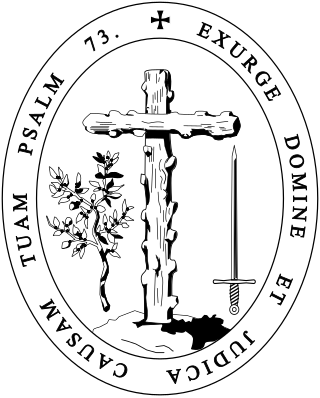
Grand Inquisitor was the highest-ranked official of the Inquisition. The title usually refers to the inquisitor of the Spanish Inquisition, in charge of appeals and cases of aristocratic importance, even after the reunification of the inquisitions. Secretaries-general of the Roman Inquisition were often styled as Grand Inquisitor but the role and functions were different.

Joseph Ferdinand Leopold of Bavaria was the son of Maximilian II Emanuel, Elector of Bavaria and his first wife, Maria Antonia of Austria, daughter of Leopold I, Holy Roman Emperor, maternal granddaughter of King Philip IV of Spain.

General Meinhardt Schomberg, 3rd Duke of Schomberg, 1st Duke of Leinster, KG, was a German-born military officer and peer who served as Commander-in-Chief of the Forces in 1691. He spent the majority of his military career in service to William III of England, fighting in the Portuguese Restoration War, Franco-Dutch War, Williamite War in Ireland and the War of the Spanish Succession.

Anne Jules de Noailles, 2nd Duke of Noailles was one of the chief generals of France towards the end of the reign of Louis XIV, and, after raising the regiment of Noailles in 1689, he commanded in Spain during both the War of the Grand Alliance and the War of the Spanish Succession, and was made marshal of France in 1693.
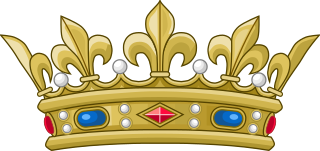
Fils de France was the style and rank held by the sons of the kings and dauphins of France. A daughter was known as a fille de France.

Claudio Coello was a Spanish Baroque painter. Coello is considered the last great Spanish painter of the 17th century.
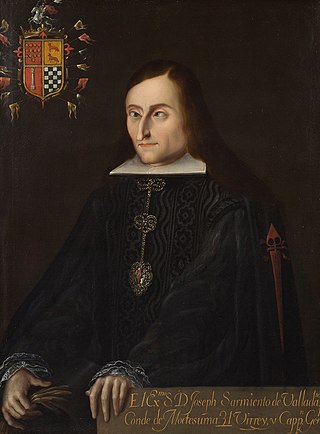
José Sarmiento de Valladares Arines-Troncoso de Romay, 1st Duke of Atrisco, jure uxoris Count of Moctezuma, GE was viceroy of New Spain from December 18, 1696 to November 3, 1701.
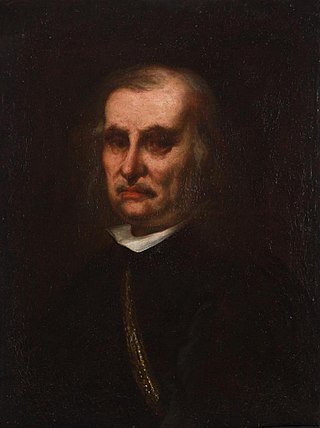
Juan Carreño de Miranda was a Spanish painter of the Baroque period.
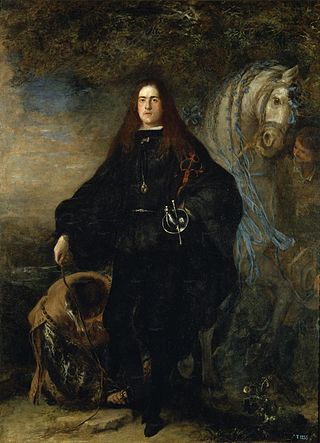
Gregorio de Silva y Mendoza was a Spanish noble from the House of Mendoza. He was the 5th Duke of Pastrana, 9th Duke of the Infantado, 7th Duke of Lerma, 6th Duke of Francavilla, 5th Duke of Estremera, and the Prince of Eboli and Melito.
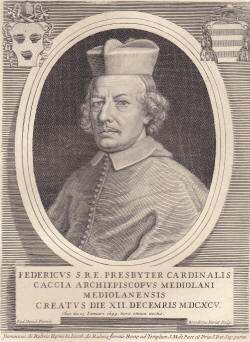
Federico Caccia was an Italian diplomat, Cardinal, and Archbishop of Milan from 1693 to 1699.

The Burdett-Coutts Memorial Sundial is a structure built in the churchyard of Old St Pancras, London, in 1877–79, at the behest of Baroness Burdett-Coutts. The former churchyard included the burial ground for St Giles-in-the-Fields, where many Catholics and French émigrés were buried. The graveyard closed to burials in 1850, but some graves were disturbed by a cutting of the Midland Railway in 1865 as part of the works to construct its terminus at St Pancras railway station. The churchyard was acquired by the parish authorities in 1875 and reopened as a public park in June 1877. The high Victorian Gothic memorial was built from 1877 and unveiled in 1879. The obelisk acts as a memorial to people buried near the church whose graves were disturbed; the names of over 70 of them are listed on the memorial, including the Chevalier d'Éon, Sir John Soane, John Flaxman, Sir John Gurney, and James Leoni.
Events from the year 1633 in France.

An equestrian statue of Charles II trampling Cromwell stands near Newby Hall in North Yorkshire, England. It was previously sited at Gautby Hall in Lincolnshire, and was originally installed at the Stocks Market in the City of London. It is a Grade II listed building.